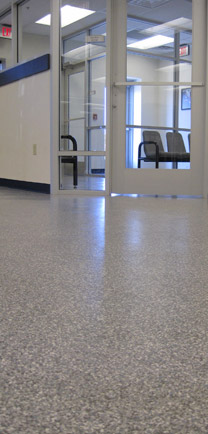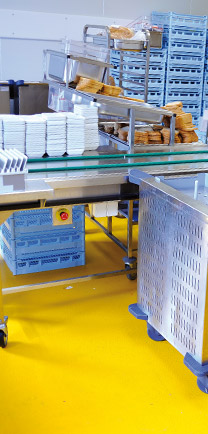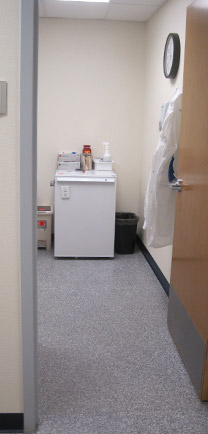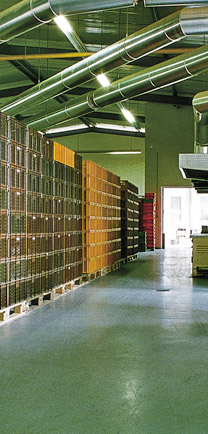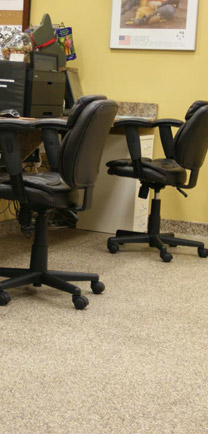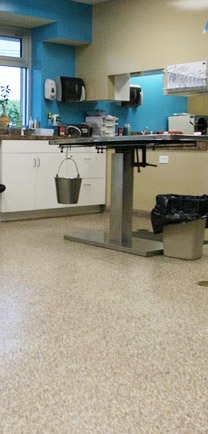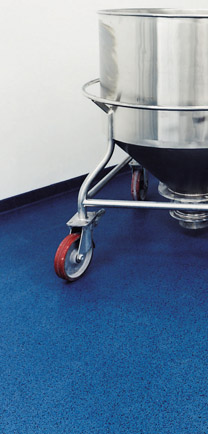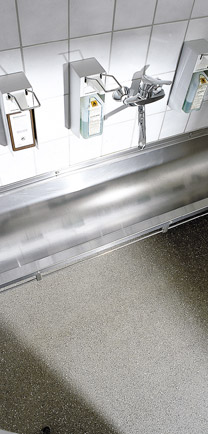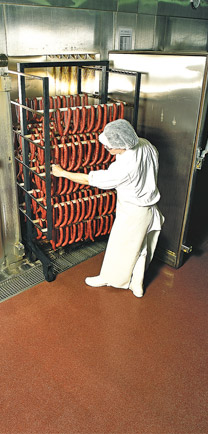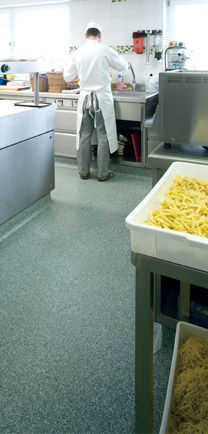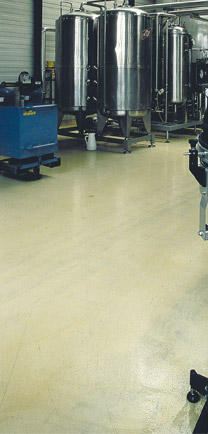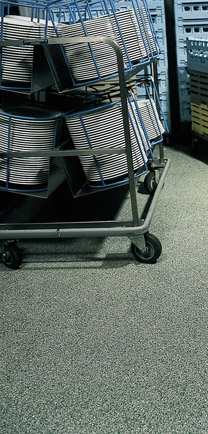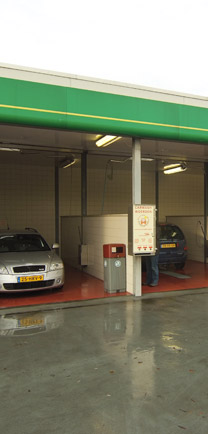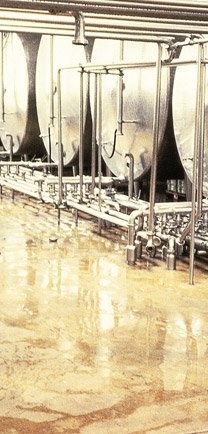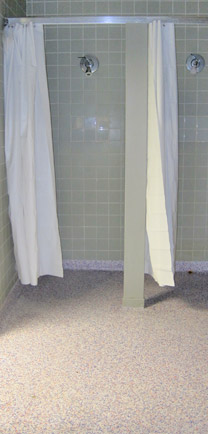Archive for August, 2013
Hospital Floor Types
Types of Hospital Floors
Pretend that you have just come into your local hospital just to visit, or perhaps you have entered the hospital’s emergency room. As you look about you, you will note that the floor is immaculately clean, and if you are “into” flooring you may allow your mind to wander as to how many different hospital floor types there must be all within just one hospital.
In every room within every sector, and of course anywhere where patients may need to go, there will always be the question of complete cleanability. After all the primary directive of any hospital is cleanliness in order to do away with such horrors as staph germs for instance.
Next, there may very well be a need to have a calming flooring involved, because after all it is a hospital where life and death decisions are frequently necessary to be made. However, one look at a distraught mother entering a hospital with a sick child will persuade you that the flooring in a hospital needs to be a calming one.
Beyond the emergency area of the hospital are even rooms that stipulate exactly the flooring needed there or the hospital will by necessity just shut down. We are speaking of the electronically laden rooms where advanced telecom equipment is running. After all we are no longer in the 19th century here, and microbes and such are not our only problem anymore. All telecom areas absolutely must have special flooring called a static dissipative flooring type. What that means is that it will take any static normally created by shuffling feet, for instance, and will then lead the static to run to what is called a ground point. This is what protects not just normal data equipment, but also any electronic equipment in a hospital telecommunications area. As you can imagine this type of flooring is of extreme importance today.
There is not one single room in a hospital that does not need to have no-VOC emission flooring. Having low VOC flooring is certainly not enough for a hospital where patient health is at stake. Imagine for instance the neo-natal area to only have low VOC emission flooring? Surely a newborn on its first days of life should not be breathing in VOCs?
For all the hospital floor types, cleanability is of great importance, but actually hospital flooring needs to be as sterile as possible, and generated that way quickly and efficiently. That means that today’s strong cleaners of all types will be used on that flooring. Thus it needs to be strong enough to resist the chemicals and harsh cleaners used on it. In addition the flooring must be non-slip in order to keep all safe, be it patients or the workers in the hospital.
There truly is only one type of hospital flooring that will meet all of these demands and that is Silikal. Silikal is lifetime flooring, meaning that it will not need replacement due to cleaning practices, solid heavy weights, stains and dyes or any other punishment that a hospital floor must endure. Best of all, it is a complete no-VOC flooring!
Best Commercial Floors
The Best Commercial Floors Available
The definition of a commercial floor can mean a large warehouse type store where people come to buy things in bulk so that they can save money, or a commercial floor can mean a fancy little imports shop where only imported chocolate candy will be sold. So you can see that the demands of one commercial establishment as opposed to the other will certainly be different.
Granted most designs for commercial flooring mean that it will wear and wear no matter how much foot traffic passes upon it. However, the best commercial floors will resist wear. Now you may have the need for a commercial floor that has to be able to take a plethora of chemicals, such as a retail store that sells all different kinds of chemicals. Take for instance a commercial floor for a pet shop that allows pets to come in and shop with their owners. Now there a commercial floor absolutely needs to be easy to clean for obvious reasons and it also needs to be waterproof for the same reasons.
This leads us to a commercial floor that is found inside a veterinary office for there can be absolutely no cracks or any kind of fissures in that flooring and again the reasons are quite obvious. But also, since a veterinary office is bound to have critters visit it that are definitely not pets, such as fleas and ticks, fissures and cracks can often hide these hitchhikers, and thus the flooring there needs to be completely seamless. The best commercial floors for a veterinary office must be non slip as accidents do happen and those visiting the veterinary office can be saved from slips and falls as would the help working inside the office.
Having seamless flooring is important in numerous commercial locations. Take a movie theater for instance. Movie theaters sell sticky drinks, and even stickier candy. The chances of someone dropping such sticky confectionary goodies are unfortunately great when their attention is distracted by car chases and all the wonders of films today, not to mention when the occupant is scared out of their wits by the sudden appearance of an unexpected ghost on the screen. The viewer may simply jump in total surprise thus once more creating a sticky mess on the theater floor. What must happen when the theater closes at night is that the floor needs to be meticulously cleaned, and thereby making sure that each and every crevice is cleaned as well.
All of the above instances are where Silikal absolutely outshines any flooring. There are never any cracks in Silikal flooring, as it is actually all in one piece which is referred to a monolithic. Most importantly Silikal remains seamless. Lesser floors will develop tiny little openings in the flooring which then unfortunately will grow in size. Sometimes someone will drop something that creates this opening, and from then on the floor deteriorates. So, now you have your answer as to what is the best commercial flooring available, and the answer has got to be Silikal.
MMA vs Epoxy
What’s Really The Difference Between MMA And Epoxy?
There are times when one feels as if one should have a chemistry degree in order to properly understand all the differences between MMA vs epoxy, and the more we dig into the disparities and what the actual differences are when looking at the actual workings of each, the more convinced we are that a degree might not be enough. What might be really needed here to make a good comparison would be to have a Master’s in organic/inorganic chemistry as well as a Master’s in analytical chemistry.
Having a doctorate in both of those would certainly nail down all the pros and cons of each and would finally blur the line between the two. Yes, at present the line is possible even more blurred than it need be, but on the other hand so many people in general need much stronger evidence to be able to know the actual differences of MMA vs Epoxy.
First are the important definitions of each of course, which means that a near perfect definition would indeed take an engineering degree to fully understand what has been defined. If that sounds like so much double speak, it is because it is. Nowhere did we find any that could be understood by the ordinary layman, thus we have had to write one ourselves.
MMA is what is actually called methyl methacrylate, but since saying that is a true tongue twister, everyone refers to it as MMA. In layman’s terms MMA is actually a transparent plastic. Think of some plastic surfaces that can be seen through, and chances are that the substance it is made of is MMA. The substance is sometimes erroneously referred to as plastic glass, though its properties are nowhere near glass. Think of Plexiglass instead, or perhaps ACRYLITE®, Perspex, or Lucite which are brand names of various kinds of MMA. On a generic level, think of it as perhaps being acrylic glass.
Acrylic glass has been utilized as far back as World War II, when the war time created such necessary inventions such as airplane gun turrets, canopies, windshields, and even submarine periscopes. Thus MMA being used as flooring now is nothing really new.
Looking now at epoxy, we find that it can also be defined as a type of plastic. However, epoxy production can be either petroleum derived or it can be plant derived even. Epoxies contain a hardener in them, meaning that without the hardener epoxy would actually remain a liquid. Hardening of epoxy is called curing. Some epoxy hardeners require the need for heat to be applied to it, thus as you can imagine that kind of hardener would be useless for epoxy flooring. Thus common hardeners instead tend to be carboxylic acids, or tertiary amines for example which are mixed together to create an epoxy flooring substance. Many of these hardeners can produce off-gassing which can be harmful even days after instillation.
Thus, we now look at MMA vs Epoxy flooring with a new understanding of each, but to be honest flooring experience is what is the “tell” in deciding one against the other. For instance, looking at Silikal which is enhanced MMA with no VOCs brings to light the fact that it is lifetime flooring, can be utilized anywhere, and it cures in less than one hour! The enhancement that Silikal has created removes any tiny pinholes from ever developing, thus creating a completely seamless, more durable flooring.
Eco-Friendly Flooring
Eco-Friendly Flooring For Commercial Use
You might ask yourself what makes any flooring eco-friendly? Good question, for it often means that it might be giving off low VOCs. VOCs are Volatile Organic Compounds, and usually they are emitted as gas from certain products. The Environmental Protection Agency has done a plethora of scientific studies on VOCs and their standing is that VOCs create both short term, as well as long term damaging health effects.
Thus it rather boggles the mind to think that a product that emits “low” VOCs could possibly be something you might wish to introduce into your commercial establishments, or your industrial ones. Unfortunately there are many commercial flooring companies whose “hype” considers low emissions of VOCs to be a good marketing tool.
Interestingly enough, the Environmental Protection Agency found that while the populace is utilizing products that contain these organic chemicals, what happens is that they are exposing themselves to very high pollution levels, and that having elevated concentrations of VOCs can and will remain in the air for a long time, even after completing that specific activity. We get VOCs from many of our daily materials, why compound them with even “low” VOCs when we can completely do without them by using true eco-friendly flooring?
One and only one eco-friendly commercial flooring exists that has absolutely no VOCs and that is Silikal. You will note that flooring industry standards are finally in place in order to standardize any of the potential toxicity in indoor flooring, thus the ads for any kind of flooring now usually announce that they are emitting “low” VOCs. It is only Silikal that frequently reminds its public that it contains no VOCs, or as the advertisers denote to it, as “zero” VOCs as if it were a calorie count of a certain kind of cola.
So regardless if it is “no VOCs” or “zero VOCs,” Silikal realized many, many years ago that VOCs were possibly extremely harmful, and thus their products have been labeled as having no VOCs for years now. That and that alone tends to raise the trust level for many commercial businesses that are searching for eco-friendly flooring.
Over and above the fact that Silikal does not contain and does not emit any VOCs, Silikal has also managed to let the public know that their commercial flooring is actually the best for other reasons as well. These reasons include the fact that once Silikal is put down, it can be put to complete service in only one hour following installation. Silikal is incredibly durable. Also, the fact that Silikal is considered to be lifetime flooring which actually means that the flooring will still be intact, and as beautiful as the day it was laid when the building itself has ended its highest and best use and is being demolished.
Let’s face it, all of those facts are very startling, thus if you are indeed searching for the best eco-friendly commercial flooring, you will really have to consider Silikal. We think you’ll never regret it!
Water Resistant Flooring
Water Resistant Flooring Options
Various needs for water resistant flooring options are sometimes of extreme importance to the eventual user. This includes areas such as communal showers, commercial bathrooms, areas surrounding swimming pools, laundry rooms, or boats and yachts to name a few. However, let us not forget outdoor waterproof flooring options, after all there are patios, cookout areas, balconies, and a myriad of other locations that will need water resistant flooring.
As for commercial usage, probably the most necessary water resistant flooring options come from various businesses who utilize high powered water cleansing of their floors. A good example of that might well be a fishery, or a rendering plant. Not only do they use high powered water blasts for cleaning, but they also often utilize steam. Another fine example might be a commercial car wash.
The point is that most of the businesses which need water resistant flooring options unfortunately do not do their homework prior to having such flooring installed. Regrettably, a month or maybe a year goes by, and the tiles that they were told would last close to forever inopportunely begin to pop up and all the flooring work was done for naught.
Commercial bathrooms are often the culprit when tiles pull up. Perhaps there has been a leak under a sink, or the toilets overflow, and thinking that a simple mopping up will take care of the problem, the business owner moves on until the tiles start coming up, or there is a terrible smell emanating from under the tiles. That smell comes from stagnant or dirty water that has infiltrated itself through the grout which is porous, and the dirty water festered there along with all the microbes, germs, mold, yeast and masses of other mildewy items. At this point, the business owner will have to pull up that tile and put down new flooring.
Well, that is unless the business owner or proprietor calls Silikal, that is. Not only is Silikal the very best water resistant flooring option available anywhere, but the proprietor will jump for joy when they hear that Silikal will last through a lifetime of floods, and a lifetime of leaky faucets, and all because absolutely nothing can get under a Silikal floor unlike even ceramic tile, wood, or worse yet those polymer tiles that simply float like cheap plywood.
Nor is that the only good news with regard to Silikal flooring. You see it can be utilized just one hour after it is put down, and has absolutely no VOCs in it whatsoever. Silikal is also a beautiful floor, proof being that it is the flooring chosen by so many of our greatest stores, and it’s also around multi-million dollar pools too. All of this is because Silikal can match any designer colors chosen by either the owner of the business or the architect. Thus Silikal is the only option with regard to water resistant flooring options.

